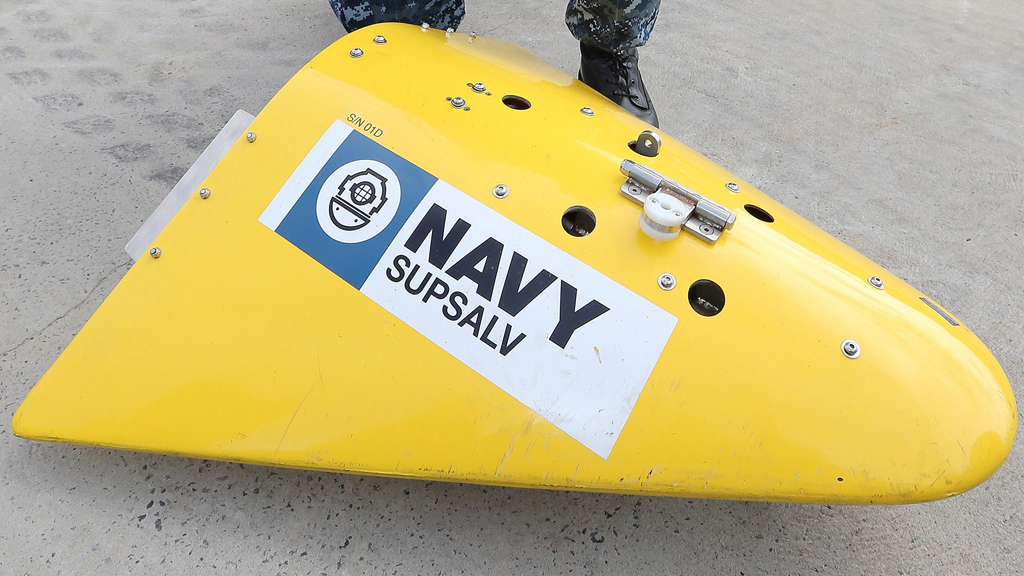Is it back to square one in the hunt for MH370?
It is a dark day in the hunt for missing Malaysia Airlines flight MH370 and one expert tells Channel 4 News that a search that it was hoped would take weeks is now likely to take years.
Australian officials announced on Thursday that the 850 sq km area in which an underwater search was taking place – identified because “pings” had been detected – was not the final resting place of the missing flight.
It meant that Thursday was the first day since the flight disappeared, with 239 passengers and crew on board, that no-one was looking for the craft.
Earlier on Thursday, a US official said the pings that had initially defined the search area probably came from the ships searching for MH370, or the equipment – ping locators – being used in the search.
And as the head of the search operation Angus Houston once said the pings were a “most promising lead” in the search for the missing flight – the fact that it is likely they are not related to the plane is a major disappointment.
Back to square one?
Channel 4 News asked Professor David Stupples, an expert in electronic and radio engineering at City University, if this means the search for MH370 is “back to square one”.
“In a way, it is,” he said, saying that the data used to try and determine the areas in which to search would need to be revisited.
Having shrunk to a smaller size, the search area has now expanded to a 60,000 sq km and the batteries in the aircraft’s black box will now be dead – meaning no more pings.
The hunt for Flight 370 - special report
Professor Stupples, a former government scientist who worked on radar, said that the problem is the locator equipment was working at the “absolute limits” of its range – making it difficult to distinguish pings from other noise.
“If the pings were of a good amplitude, or power, they would not have been misinterpreted. Whatever they thought they were hearing was coming from a great depth – on the absolute limits of the range.”
Pings vs Noise
Black box pings are set at a frequency of 37.5kHz in order to make them distinguishable from other noises.
The problem, Professor Stupples says, is this is “not a unique frequency” but “the best frequency”. When locating equipment is used at the limits of its range, the pings can be mistaken for other sounds.

And what other sounds might they be? Potentially the pinger locator itself (pictured, above).
It was disgraceful. That lost time at the beginning was gold dust. Professor Stupples
“The pinger locator is a lot of electronics that is being towed alongside or close to the floor” Professor Stupples said.
“All the electronics inside create noise and that noise is misinterpreted because the ping itself is very low in power.”
Professor Stupples said authorities should now return to the data, and get independent experts to look at the information, to clarify for certain that the 60,000km search area is the right one.
After this they should deploy Remus 6000 unmanned vehicles to search the seabed. Until now the search has used the Bluefin 21 underwater autonomous vehicles but Professor Stupples says the Remus, which was used to locate Air France flight 447 which disappeared in 2009, can work at greater depths.
This search with two or three Remus vehicles would take around two years – as the search is likely to be interrupted by poor weather conditions.
Who is to blame?
Despite the problems this causes, Professor Stupples was keen to emphasise that the Australian authorities have conducted the search “in the way it should have been conducted”.
However, with the Malaysian government it is a different story. Professor Stupples said the way in which the Malaysian government was slow to release information was “disgraceful”.

He said: “Because Malaysia is used to controlling the media it was reluctant to release certain important information. Some of this information was from military radar.
“That information was tracking the location of the aircraft in almost real time. It was disgraceful.
“That lost time at the beginning was gold dust. This pinger was only going to last thirty days and we lost 20 days in hunting for this aircraft.”
The MH370 families (pictured above), he says, are well justified in their anger.